This isn't the best picture but what you're looking at is
the entrance to the lower section that would take you to the forward
mounted machine guns which is called the nose turret. Earlier models
didn't have the nose turret but once it was added, this eliminated the
B-17's main defensive weakness in head-on attacks. This area is located
right as you enter the aircraft and if you were to look up you would see
the navigators area again. By the way, you would have to be pretty small
to get inside here that's for sure.
|
|
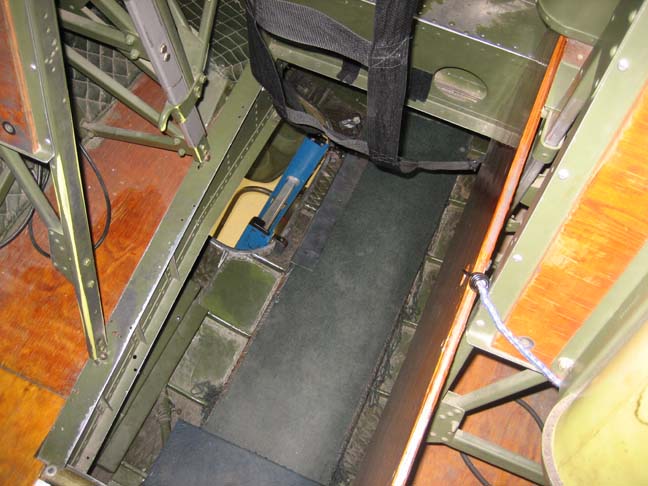 |
If you turn around and wanted to walk towards the rear of
the plane, you would have to pass this area first. What you see here is
the aircrafts communications which are on both sides of the aisle way.
Our guide pointed out that if you didn't have the right frequency that
you were looking for, you would pull out this whole section of
electronics, then reach over and pull out another one on the opposite
side of the aisle and then replace it with the new one. And just like
that...a new frequency would be available for you. Boy we've come a long
way since then that's for sure.
|
|
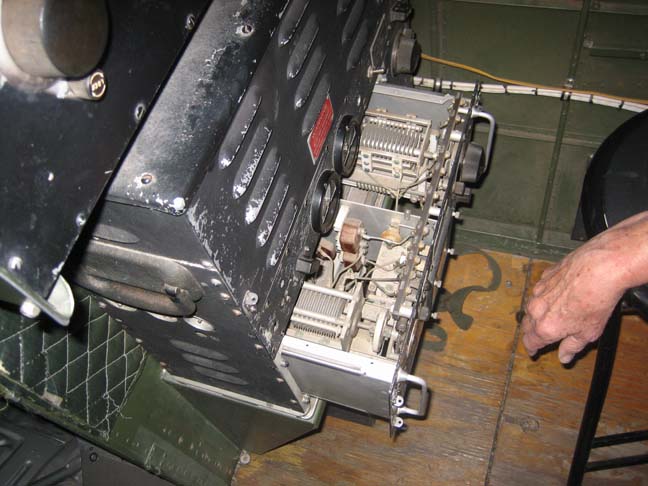 |
This is looking towards the rear of the plane and right where I'm
standing the communications radios were on both sides of me. What you're
looking at in the lighted area is the bomb bay. To get to the other side
you would have to walk along that small path or cat walk that you see
below. Also notice that you can see the ground below (bottom right)
because the bomb bay doors are open.
|
|
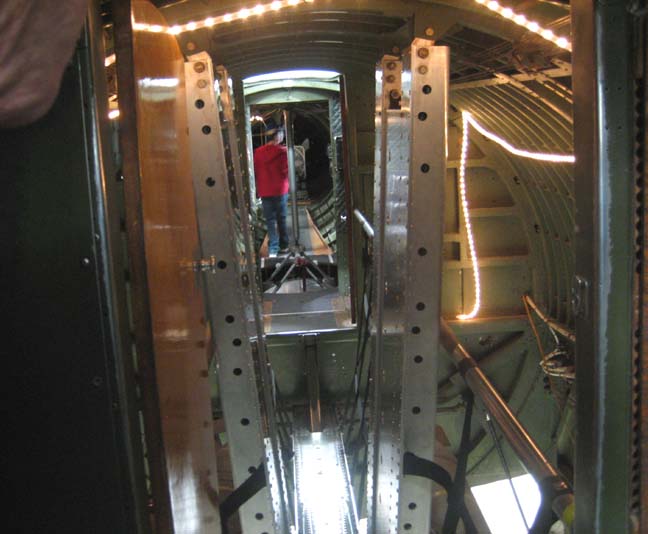 |
Now we're on the other side after walking along the cat-walk looking
back. It looks safe enough but those hand rails and netting are only
there for the public so you better be sure not to slip if you were in
the air. The B-17 could carry 8,000 pounds of bombs on a short range
mission and 4,500 pounds if you were on a long range mission.
|
|
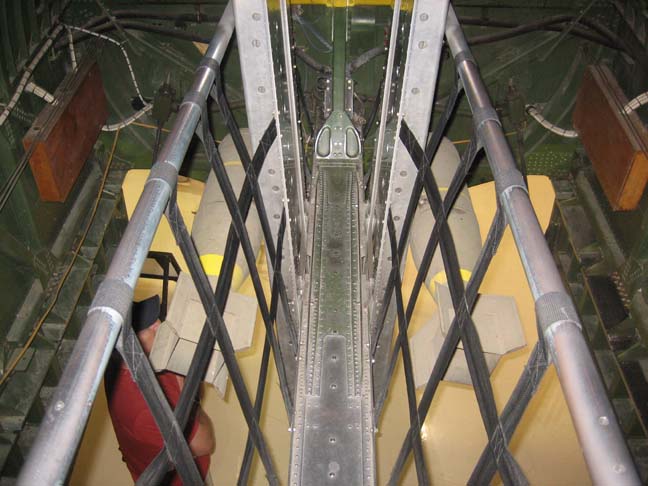 |
Now that I'm across the bomb bay area this is what you see when you step
off the cat walk and up over the ledge. Notice those yellow tanks, they
have oxygen in them for the crew to breath at high altitudes. These
tanks were place throughout the aircraft because these older planes
weren't pressurized like modern ones are. This would be a bad thing if
you had a fire onboard and they were ruptured. After you reached 10,000
feet they would put on their oxygen masks and continue to climb to their
operational altitude.
|
|
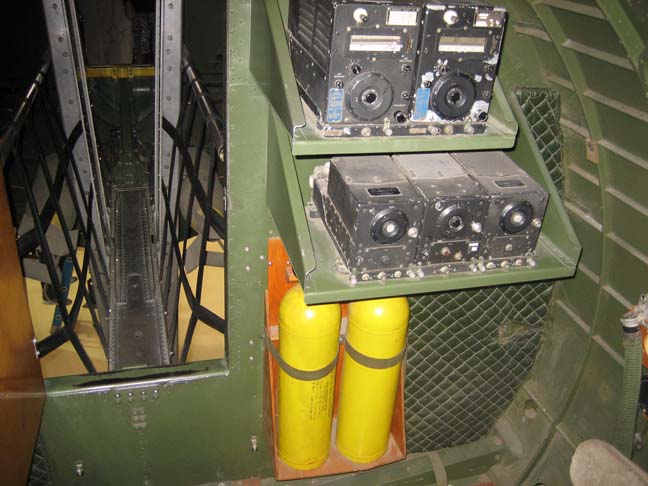 |
When you turn around and step down, this is what you see. This is the
ball turret that is placed approximately in the middle of the aircraft
that pokes out of the underside or belly. It has two .50 caliber machine
guns mounted inside it and this unit gimbals in any direction so the guy
inside can shoot in any direction. There is one catch though, to be able
to operate this gun you couldn't be any taller than 5' 3" or 5' 4"
because anyone else just wouldn't fit. To get inside this ball turret
you would pass through a small square door once it was in the upright
position which I'll show you what it looks like later on. Come to find
out, the whole crew was pretty short because if you were taller than 5'
8" you probably wouldn't be flying in this plane at all.
|
|
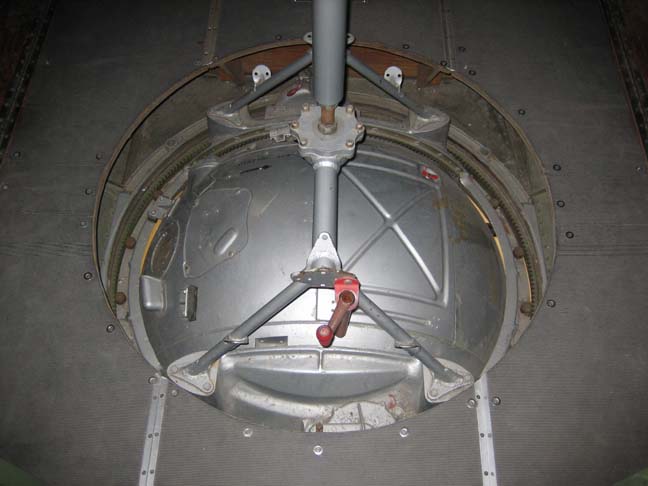
|
Looking up and straight towards the back with the ball turret below me,
you can see the support pole that goes from the turret to the roof. On
either side of the aircraft you can see two .50 caliber machine guns in
the waist position that are not mounted directly apart from one another.
The reason for this is because this area got pretty cramped with the two
gunners moving from side-to-side so this gave them more freedom of
movement and for the men to pass through. Just before they were at their
target the men would put on a 30 pound flak suit and steel helmet
designed to protect against antiaircraft fire. Parachutes were too bulky
to be worn all the time, but the crew did wear a harness that allowed
them to quickly clip on their parachute when needed.
|
|
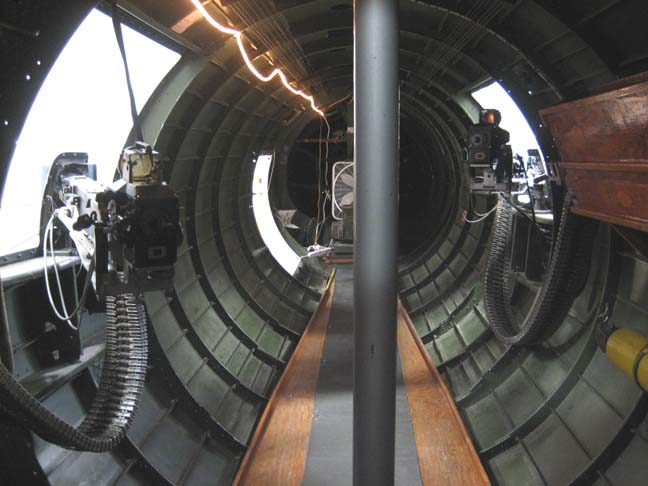
|
|
1
2
3
4
5
6
7
8
9
10
11
12
13
14
15
16
17
18
19
20
21
22
23
24
25 |